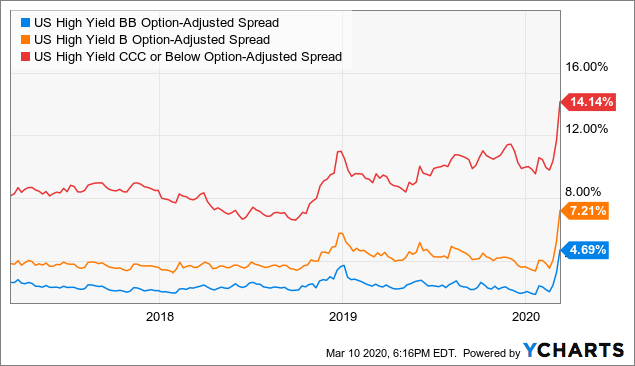
Stock splits that are two-for-1 or three-for-1 convert shares of common stock to one (1) share. The most popular ratios used are three-for-one or two-for-1. Let's explore the various types of splits and their effects on stock prices. A split ratio can be used to increase the value of a stock, without devaluing it.
Shares of Common Stock up to and including twenty (20) into one (1) share
Doral will commence trading its common stock via the NYSE on July 13, 2013. Each issued and outstanding share will be combined into one (1) share in a reverse stock split. The number total of authorized shares will be decreased by 15 million shares while the number of issued shares is expected to decrease by 134.0 million. The NYSE will now trade Doral's common stock under the symbol "DORAL" as a result.

The Company issues shares of common stock to Class A Preferred Stock holders and Class B Preferred Stock holders. The Series A Holder will be issued a certificate detailing the number and type of Common Stock they received after conversion. The Dividend Payment Date will be after the date of conversion. However, Series A Preferred Stock holders will not be entitled to receive dividends from the Company.
Most split ratios are either 2-for-1 or 3 for 1.
A stock split is a method used by publicly traded companies to distribute additional shares to shareholders. This procedure increases the number outstanding shares by a certain multiple. The total dollar value for the shares is not affected. A stock split is not a merger or stock sales. Most common split ratios are 2-for-1 and 3-for-1, but there are other variations as well.
Stock splits are usually done in a 2:1 ratio. Other ratios, such as 3-for-one or 10-for-1, may be approved by shareholders. While 2:1 is the most popular stock split ratio, there are other options such as 3:1, 10:1, or 3:1. These ratios will be easy to remember and apply. As a result, each stock holder will receive an additional 50 shares.
Stock price of company could be affected
Companies that want to increase their shares' value will notice the impact of a stock splitting. This reduces the stock price, which makes it easier for investors to invest in the company. It also allows stockholders to buy more shares. The more people who buy the stock, the higher the value of the company's shares. However, the stock market will change.

One of the best benefits of a stock splitting is the fact that it lowers a company's share prices, making them more accessible for small investors. Some companies have incredibly high share prices, discouraging small investors from buying stock. By dividing the shares, the stock price will be more affordable for new investors and drive the price higher. It could also make a company more appealing to potential new employees.
FAQ
What is the difference in a broker and financial advisor?
Brokers are individuals who help people and businesses to buy and sell securities and other forms. They handle all paperwork.
Financial advisors are experts in the field of personal finances. They are experts in helping clients plan for retirement, prepare and meet financial goals.
Banks, insurance companies and other institutions may employ financial advisors. They may also work as independent professionals for a fee.
If you want to start a career in the financial services industry, you should consider taking classes in finance, accounting, and marketing. Also, you'll need to learn about different types of investments.
How are share prices set?
The share price is set by investors who are looking for a return on investment. They want to make money from the company. So they buy shares at a certain price. Investors make more profit if the share price rises. If the share price falls, then the investor loses money.
An investor's primary goal is to make money. This is why they invest. They can make lots of money.
What is a REIT?
An entity called a real estate investment trust (REIT), is one that holds income-producing properties like apartment buildings, shopping centers and office buildings. These are publicly traded companies that pay dividends instead of corporate taxes to shareholders.
They are similar in nature to corporations except that they do not own any goods but property.
Statistics
- "If all of your money's in one stock, you could potentially lose 50% of it overnight," Moore says. (nerdwallet.com)
- For instance, an individual or entity that owns 100,000 shares of a company with one million outstanding shares would have a 10% ownership stake. (investopedia.com)
- US resident who opens a new IBKR Pro individual or joint account receives a 0.25% rate reduction on margin loans. (nerdwallet.com)
- Individuals with very limited financial experience are either terrified by horror stories of average investors losing 50% of their portfolio value or are beguiled by "hot tips" that bear the promise of huge rewards but seldom pay off. (investopedia.com)
External Links
How To
How to make a trading program
A trading plan helps you manage your money effectively. It allows you to understand how much money you have available and what your goals are.
Before creating a trading plan, it is important to consider your goals. You may want to save money or earn interest. Or, you might just wish to spend less. If you're saving money, you might decide to invest in shares or bonds. You could save some interest or purchase a home if you are earning it. Perhaps you would like to travel or buy something nicer if you have less money.
Once you know what you want to do with your money, you'll need to work out how much you have to start with. This depends on where your home is and whether you have loans or other debts. It's also important to think about how much you make every week or month. Income is what you get after taxes.
Next, you'll need to save enough money to cover your expenses. These include rent, food and travel costs. Your monthly spending includes all these items.
You'll also need to determine how much you still have at the end the month. That's your net disposable income.
You now have all the information you need to make the most of your money.
Download one online to get started. Ask an investor to teach you how to create one.
Here's an example of a simple Excel spreadsheet that you can open in Microsoft Excel.
This shows all your income and spending so far. It also includes your current bank balance as well as your investment portfolio.
Another example. This was designed by a financial professional.
It shows you how to calculate the amount of risk you can afford to take.
Remember, you can't predict the future. Instead, you should be focusing on how to use your money today.